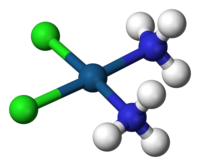
Photo from wikipedia
Since the report of photomagnetic effects in Prussian blue Fe/Co networks 20 years ago by the japanese group of Hashimoto, a substantial family of molecular analogs have been obtained and… Click to show full abstract
Since the report of photomagnetic effects in Prussian blue Fe/Co networks 20 years ago by the japanese group of Hashimoto, a substantial family of molecular analogs have been obtained and characterized. These compounds offer a unique opportunity to follow metal-to-metal electron transfer by investigating their structural, spectroscopic, electrochemical and magnetic properties. We propose an overview of recent results in order to highlight the common features of these coordination compounds, as well as the differences, with the well-known class of photomagnetic coordination compounds based on spin crossover.
Journal Title: European Journal of Inorganic Chemistry
Year Published: 2018
Link to full text (if available)
Share on Social Media: Sign Up to like & get
recommendations!